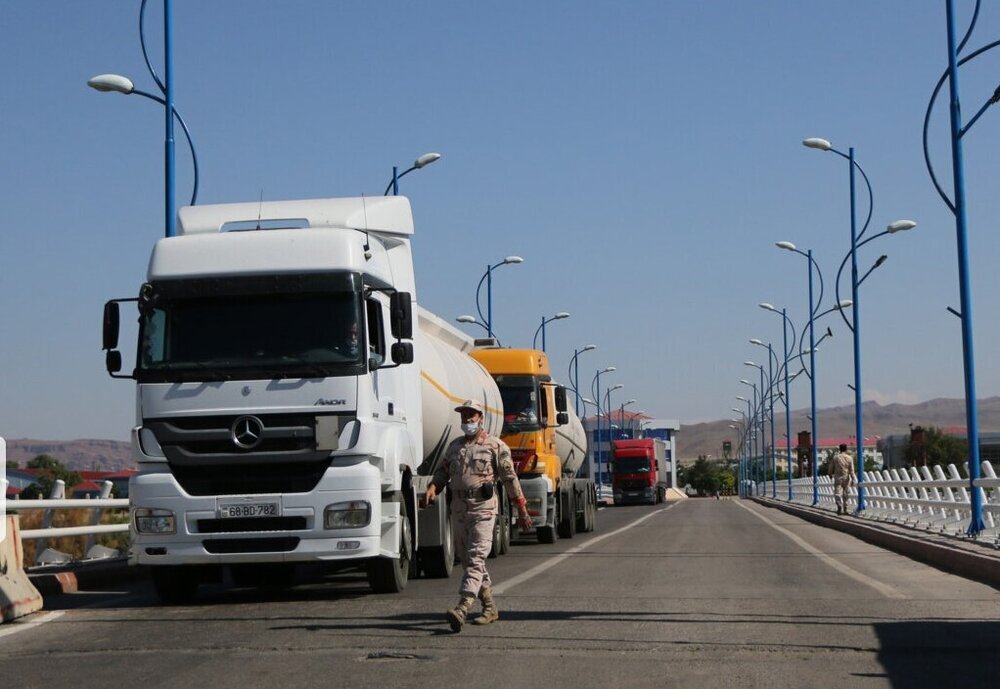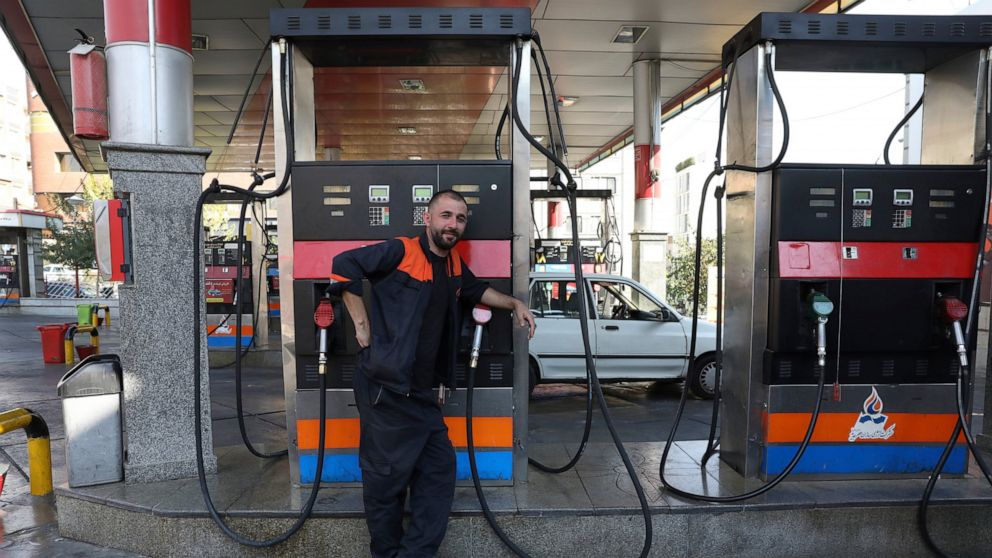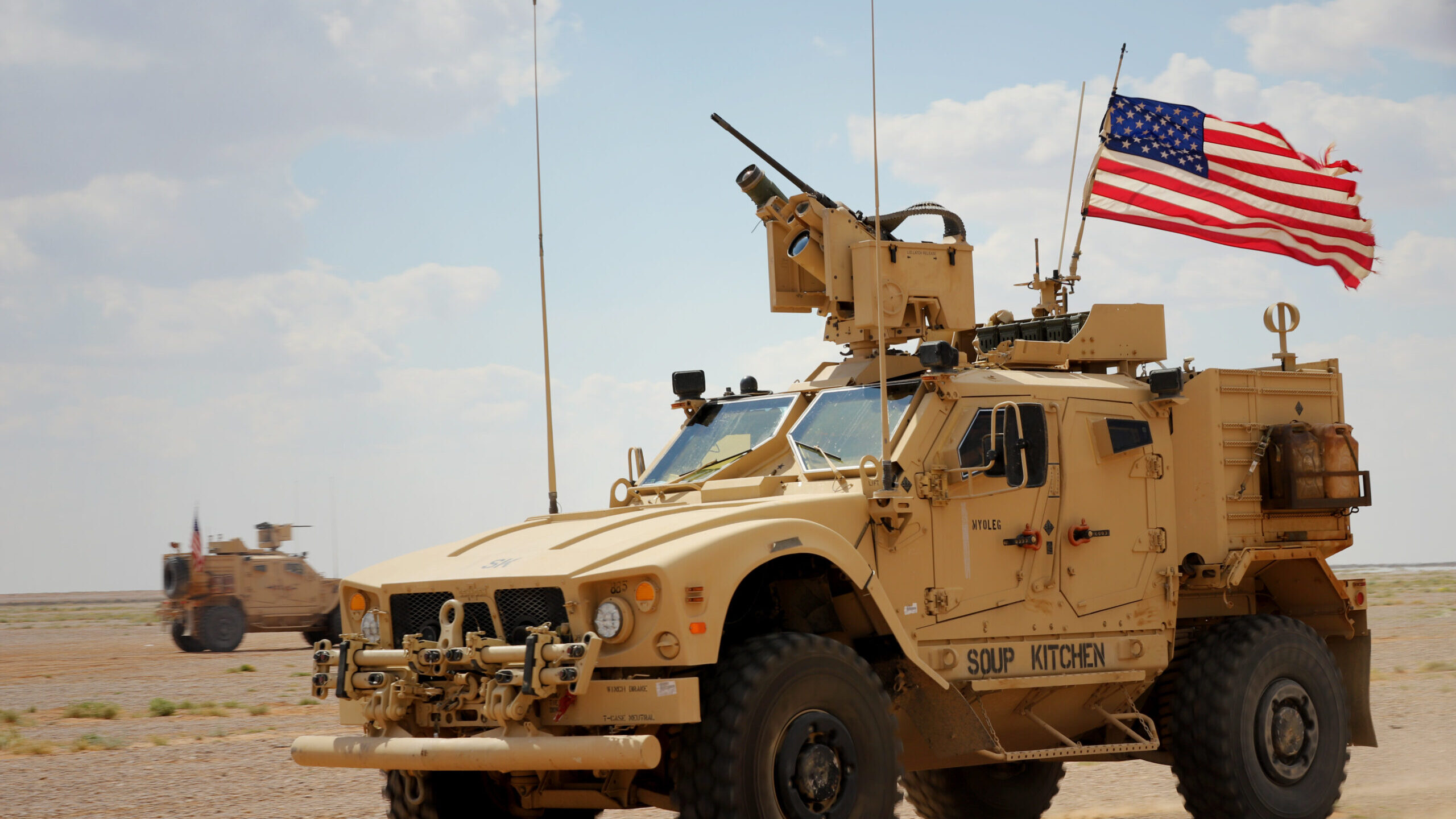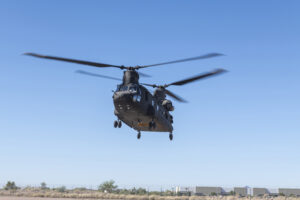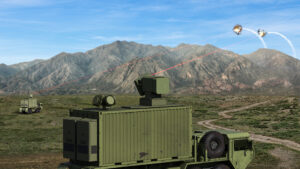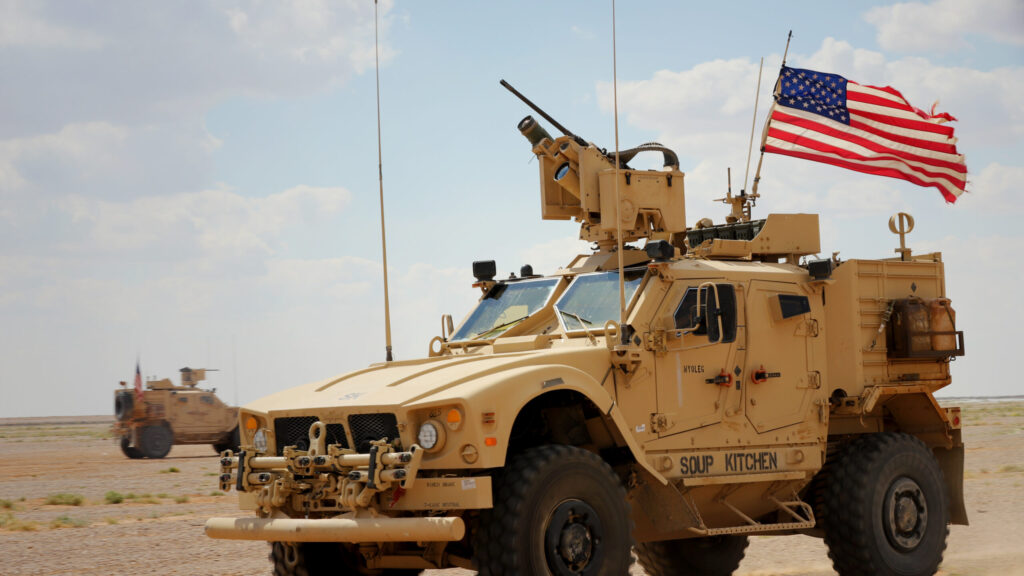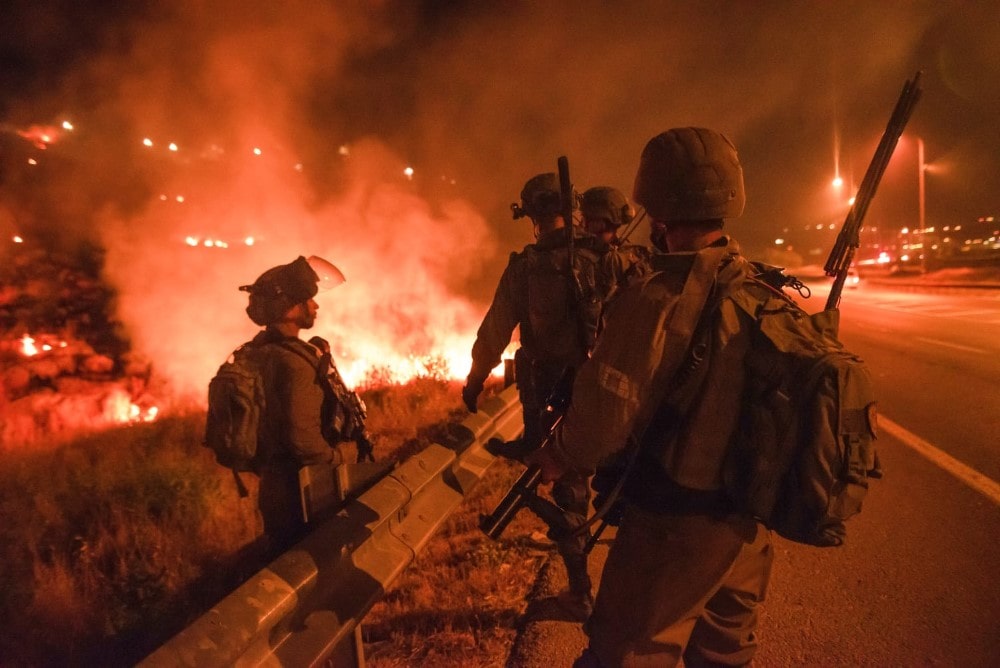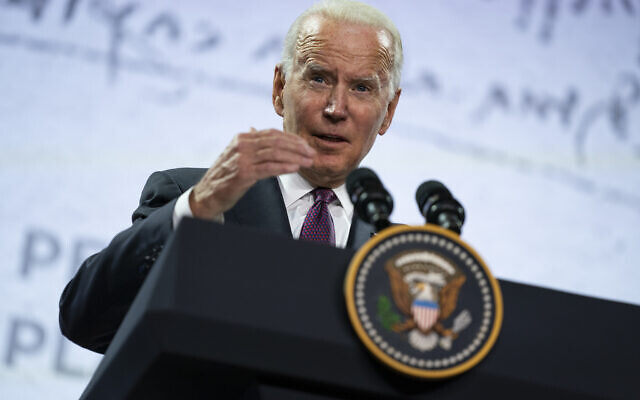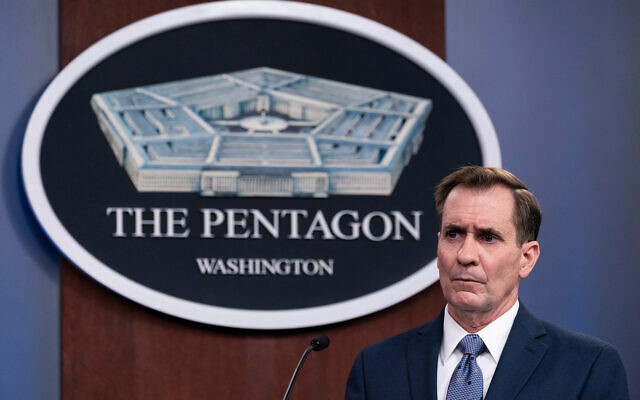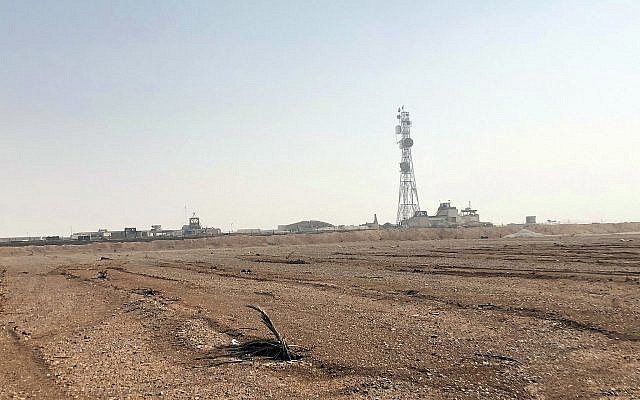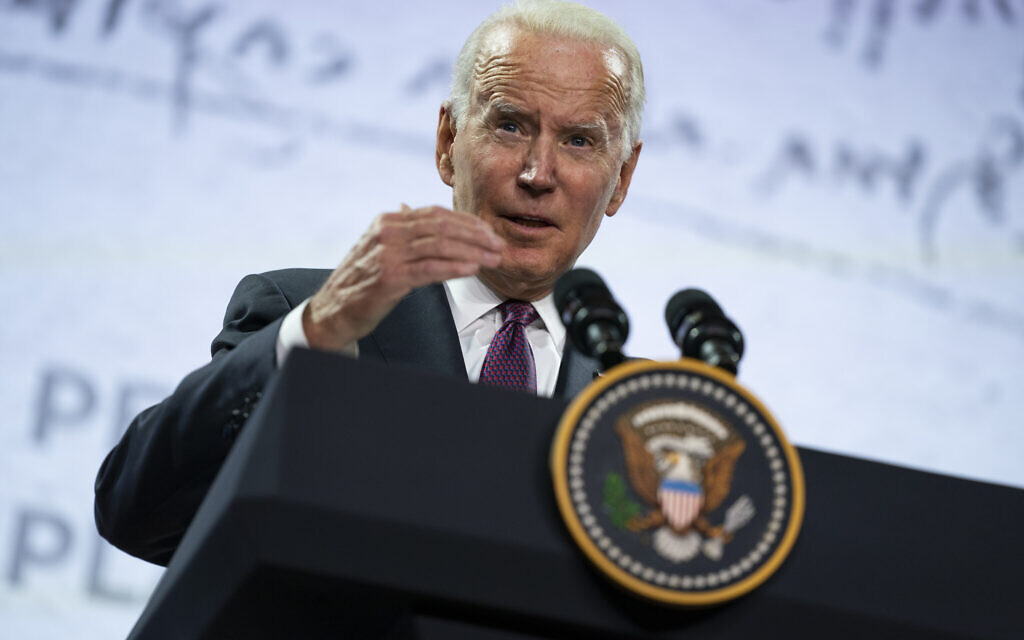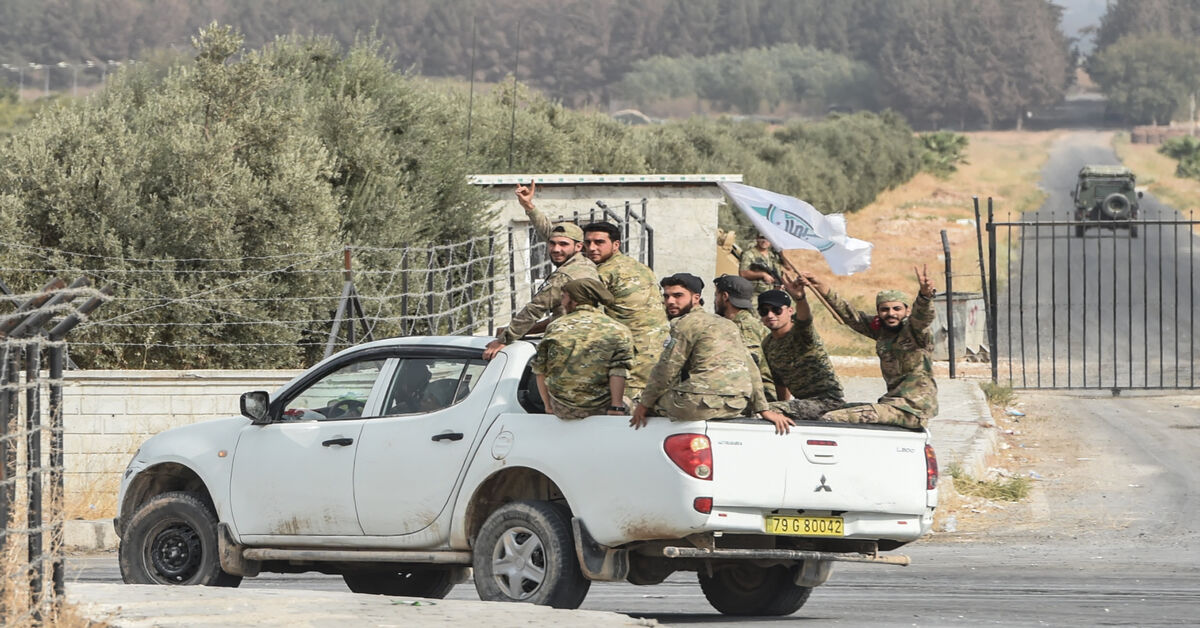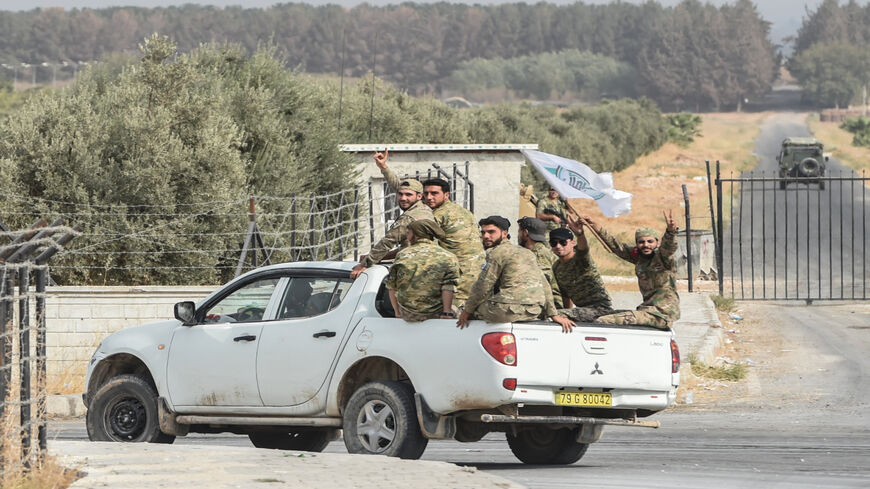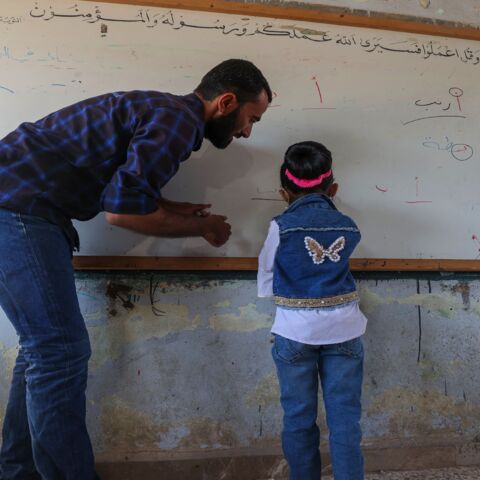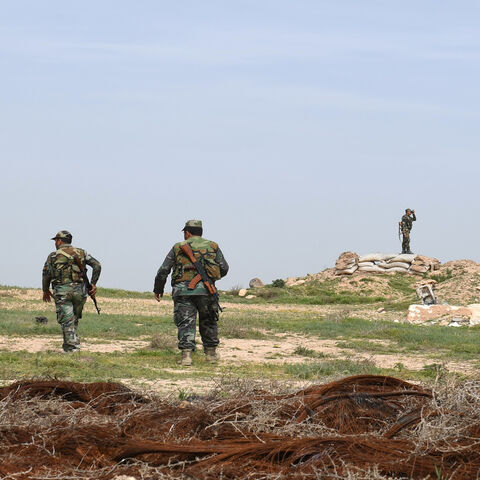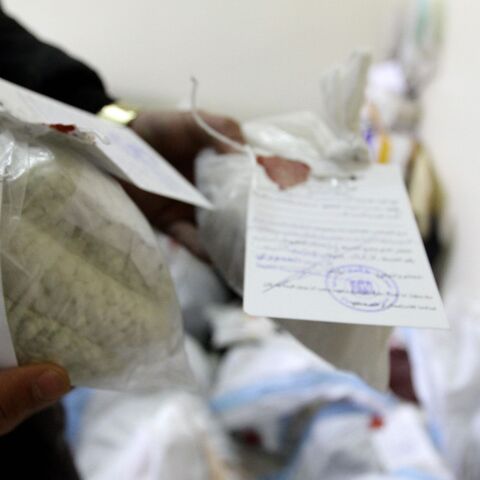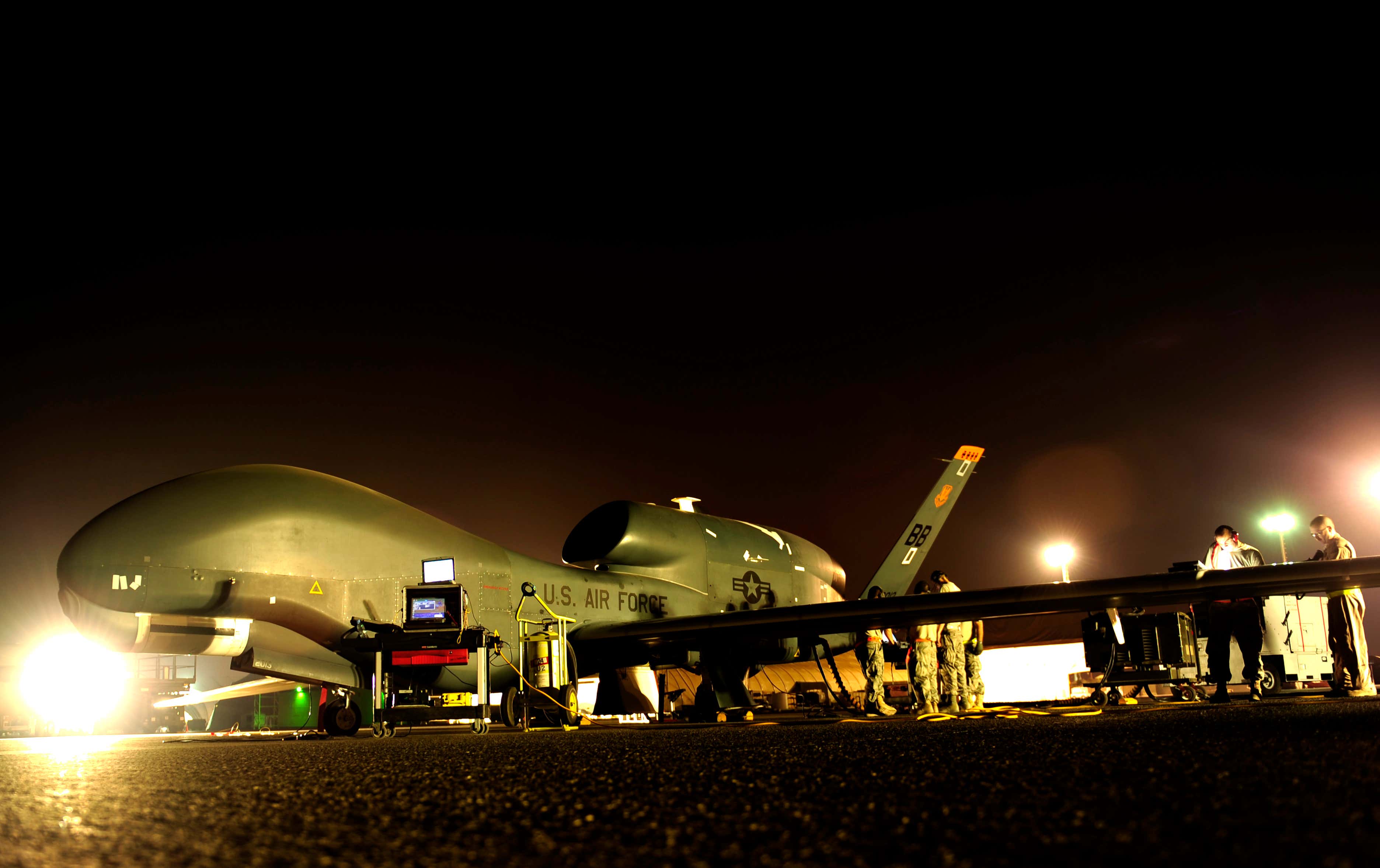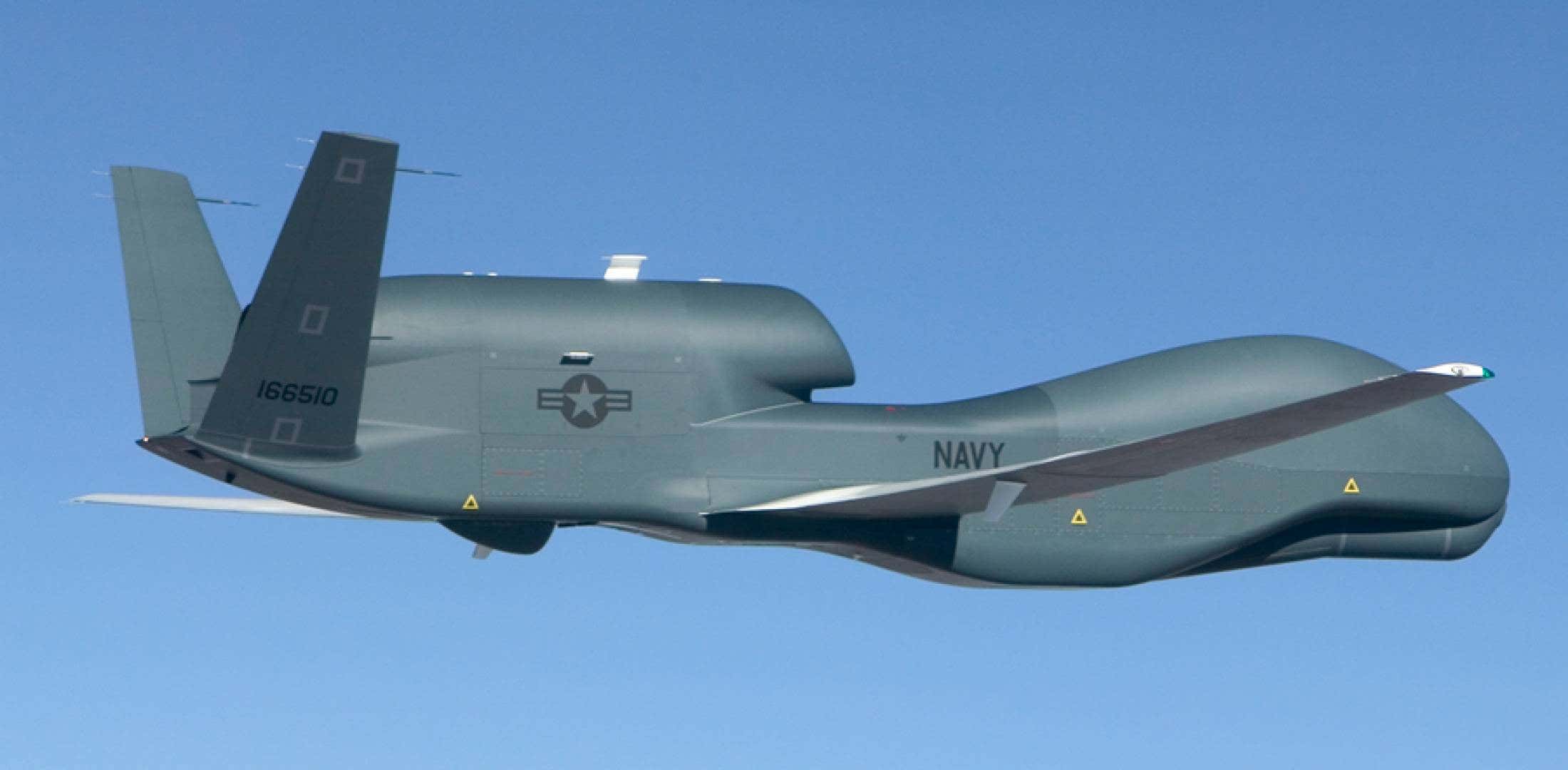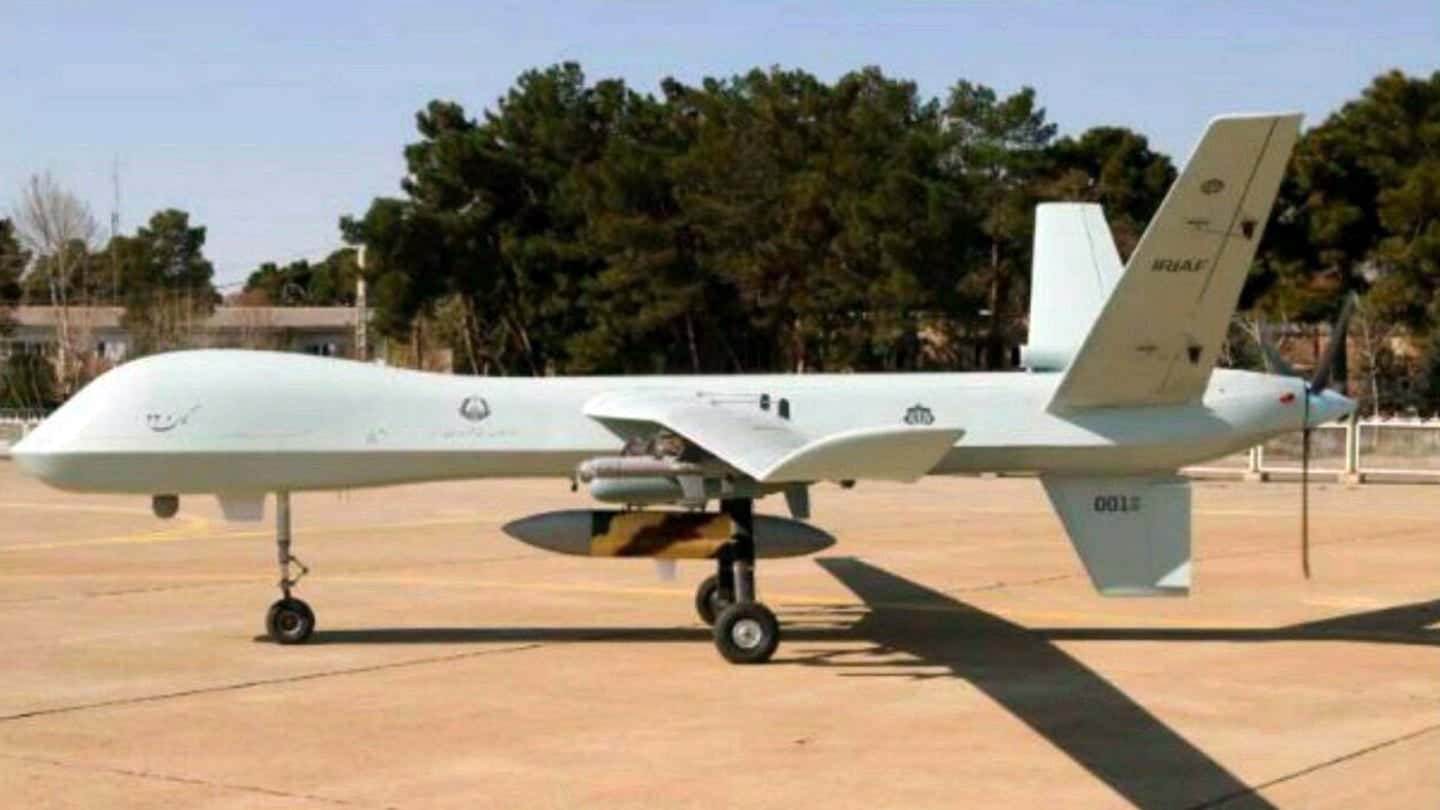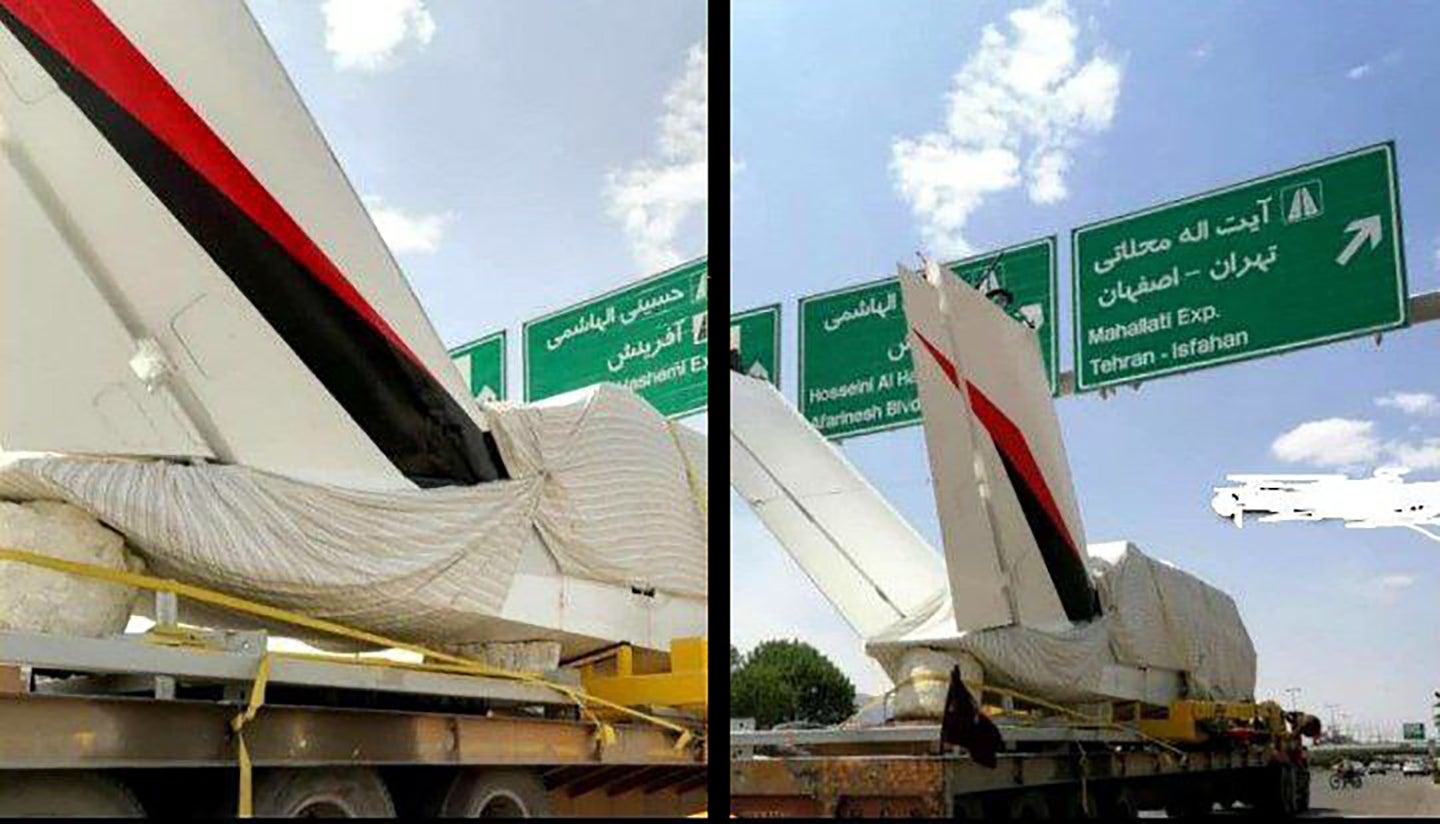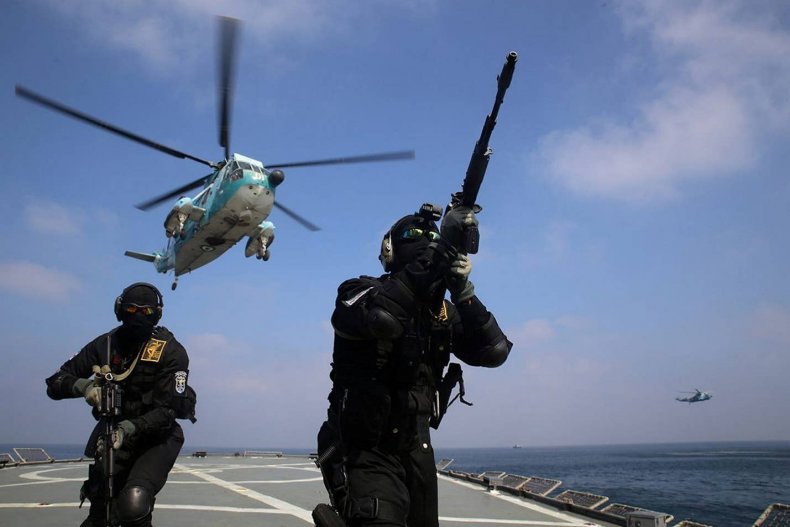Hamas and Iran Join Forces to Encircle Israel
by Yaakov Lappin

Iran’s Supreme Leader Ayatollah Ali Khamenei delivers a televised speech in Tehran, Iran June 4, 2021. Official Khamenei Website/Handout via REUTERS
A senior Hamas delegation that visited Iran in October — and met with Supreme Leader Ayatollah Khamenei — is the latest sign of the close partnership between the Sunni Palestinian terror organization and the Shiite Islamic Republic.
Hamas has an important role to play in Iran’s scheme to surround Israel with Islamist, heavily armed forces, said Col. (res.)
David Hacham, a former Arab-affairs adviser to seven Israeli defense ministers. However, Hacham said that there isn’t a clear consensus within Hamas over just how far it should align with Tehran.
“There is no doubt that in recent years, there has been an improvement in Hamas-Iran ties,” Hacham said. In 2011, a
rift developed over the Syrian civil war, with Hamas backing Sunni Muslim Brotherhood-affiliated rebels against Iran’s ally, the Assad regime.
Following that split, the former head of Hamas’ political bureau, Khaled Mashaal, was
expelled from Damascus. He moved to Qatar, where he re-established an overseas Hamas headquarters.
November 5, 2021 3:40 pm
0
Pro-Israel Readers Swarm New York Times Comments Section After Article Blames Israel for Gaza Wedding Debt
Vocal pro-Israel commenters are dominating the comments section of a New York Times dispatch that blames Israel for the wedding-related...
Iran suspended military and economic ties to Hamas.
In 2017, new attempts were made to bridge the gap between the two sides, and Iran renewed its financial aid to Hamas. “Since 2017, the money has been flowing in without stop, and the sum is estimated to be many tens of millions of dollars per year,” Hacham added.
The reconciliation was enabled partly because Hamas’ current head of the political bureau, Ismael Haniyeh, who is based in Qatar, and the head of Hamas in Gaza, Yahya Sinwar — whose roots lie in Hamas’ military wing — have a positive view of Iran.
“The military wing is more aware of the military and economic significance of Iran’s assistance to Hamas,” he said. The political wing, meanwhile, has taken a more cautious view of Iran, and is more concerned about how the alliance could affect Hamas’ Sunni Arab credentials.
It appears as if the military wing has won the argument.
“The recent years have seen many Hamas delegations visiting Iran,” Hacham said. Haniyeh was a prominent
guest at the funeral of the late Quds Force Commander Qassem Soleimani in January 2020. There, he dubbed Soleimani “the martyr of Jerusalem,” and said he “provided to Palestine.”
Within Gaza, meanwhile, Hamas is using Iranian technical know-how to enhance its rocket arsenal’s range. Hamas routinely fires rockets into the Mediterranean Sea to test their ranges and performance.
“Iran has taught Hamas how to build its own domestic rocket manufacturing industry,” Hacham said. “In the past, Iranian weapons were smuggled from the Sinai Peninsula into Gaza; though the Egyptian campaign to destroy smuggling tunnels appears to have largely stopped this activity, it is fair to assume that a small number of tunnels remain.”
Despite the disruption in smuggling, Iran continues to play an invaluable role in Hamas’ military-terrorist build-up. Iran provides training for Hamas operatives, shares offensive and defensive operational plans and battle doctrines, and passes along scientific and engineering information needed for producing ever-improving rockets, explosives, and other weapons in Gaza.
“This is all continuing at
full speed,” said Hacham.
The latest Hamas delegation to Tehran, which was reported by the
Al-Quds Palestinian newspaper, included Khalil Al-Hayya, Sinwar’s deputy, who leads Hamas’s Arab-Islamic relations portfolio.
The delegation was welcomed in Iran by Hamas’ representative to the Islamic Republic, Khaled Al-Kadumi.
After the visit, Iran’s Supreme Leader, Ayatollah Khamenei, released a statement calling for “the unity of Muslims” as a precondition for solving “the Palestinian problem in the best manner.”
“Iran has an interest in relations with Hamas, because it wants to surround Israel from all sides,” said Hacham. “By establishing strongholds in Gaza, Lebanon, and Syria, it is surrounding Israel, effectively putting it under a blockade. This motivates Iran to continue investing in its relations with Hamas, in addition to propping up their direct puppet, Palestinian Islamic Jihad [Gaza’s second largest armed faction].”
United by their war against Israel, Iran viewed May’s armed conflict between Palestinian terror factions in Gaza and Israel as a ‘
victory‘ for its cause, said Hacham.
After Hamas’ violent coup in Gaza in 2007, Iran expanded its support, based on the vision of turning Gaza into an escalation front against Israel. “Assistance grew from tens of millions of dollars per year in 2007 to $200 million per year a few years later, according to reliable assessments,” said Hacham.
At the same time, Iran has been careful not “to put all of its eggs in Hamas’ basket,” Hacham said, noting that it provides supports to “all variants of radical Islamic organizations in Gaza, with an emphasis on Palestinian Islamic Jihad, which is a central Iranian proxy.”
Hamas activities in other parts of the Middle East, such as Lebanon, also receive Iranian support, he added. “The financial and military assistance isn’t slowing down. Iran has a need to exert its influence over all radical Islamist forces in the region.”
All of this is happening as Iran faces an ongoing, deep
economic crisis, which has not deterred its leadership from investing significant treasure in its regional long-range influence program. That fact alone is testament to the depth of the regime’s dedication to its radical hegemony objective and Israel’s destruction, irrespective of the troubles faced by everyday Iranians back home.
Investigative Project on Terrorism (IPT) Senior Fellow Yaakov Lappin is a military and strategic affairs correspondent. He also conducts research and analysis for defense think tanks, and is the military correspondent for JNS. His book, The Virtual Caliphate, explores the online jihadist presence. A version of this article was originally published by IPT.
A senior Hamas delegation that visited Iran in October — and met with Supreme Leader Ayatollah Khamenei — is the latest sign of the close partnership between the Sunni Palestinian terror organization and the Shiite Islamic Republic. Hamas has an important role to play in Iran's scheme to...

www.algemeiner.com
